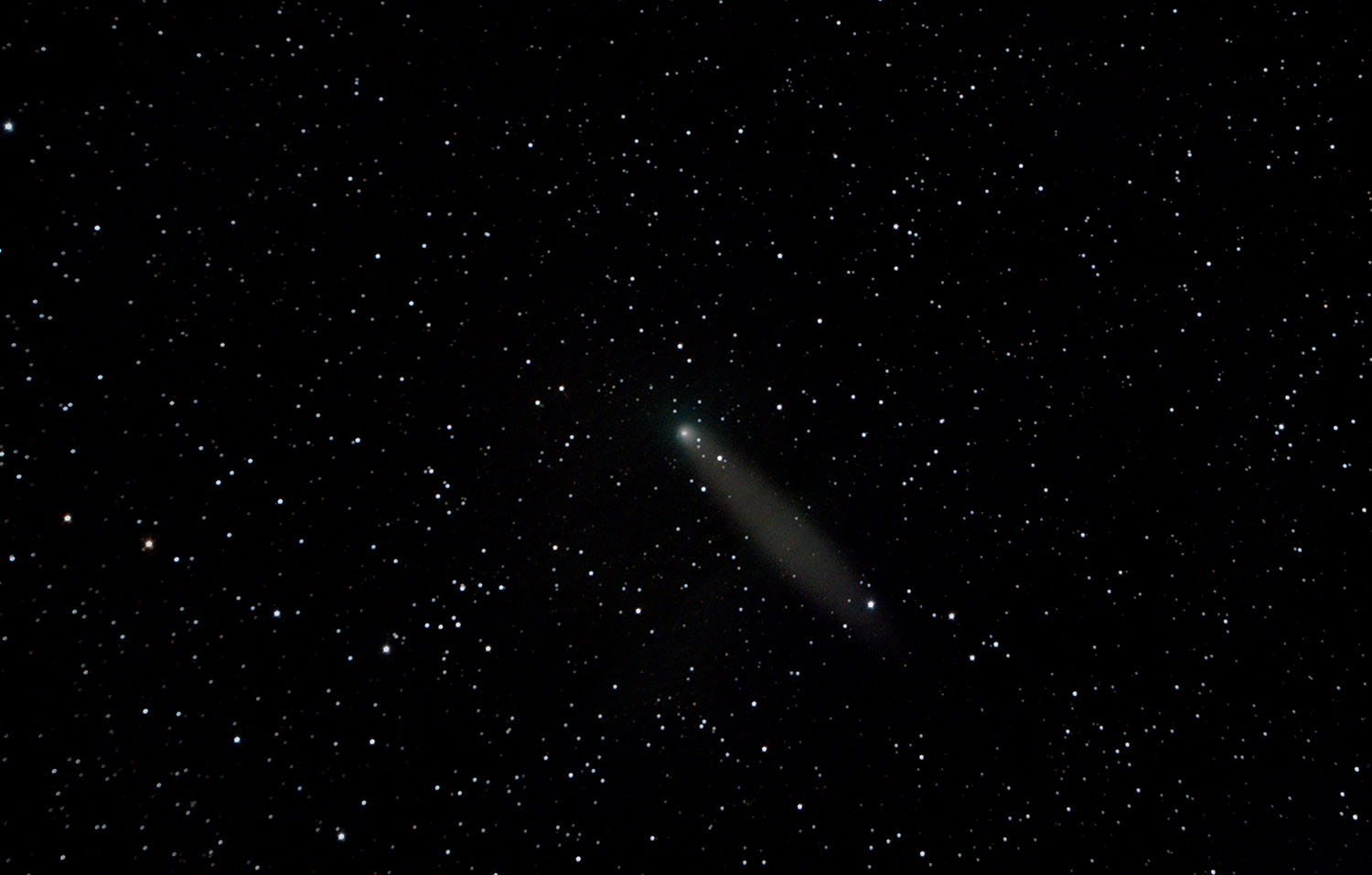Derived quantities
Perihelion: 1.59 AU
Aphelion: 20.9 AU
Orbital period: 37.84 years
The Comet that would become 38P was first noticed by Jèrome Eugène Coggia on the night of January 23rd, 1867 observing from the Marseilles Observatory in France using an 80-cm reflecting telescope. Unfortunately, Coggia misidentified the faint smudge as an uncatalogued nebula, and missed the discovery. On the next clear evening, astronomer E.J.M. Stephan also at Marseilles noted the same smudge had moved into the constellation Aries. The comet would remain lost for nearly a century, until Finnish astronomer Liisi Oterma recovered it as a +13th magnitude smudge on the night of November 6th, 1942.
The 2018 apparition of Comet 38P is one of two close approaches of the comet to the Earth for the 21st century, and won’t be topped until November 3rd, 2056 at 0.7 AU distant. The last close pass was 0.63 AU on December 7th, 1942.
Taken 12/8/18 in Grand Rapids, Ohio by Russell Kille on a CPC 1100 with Hyperstar @ F2 and ZWO ASI294MC Pro camera
View the Comet in the SkyLive 3D Solar System Simulator
